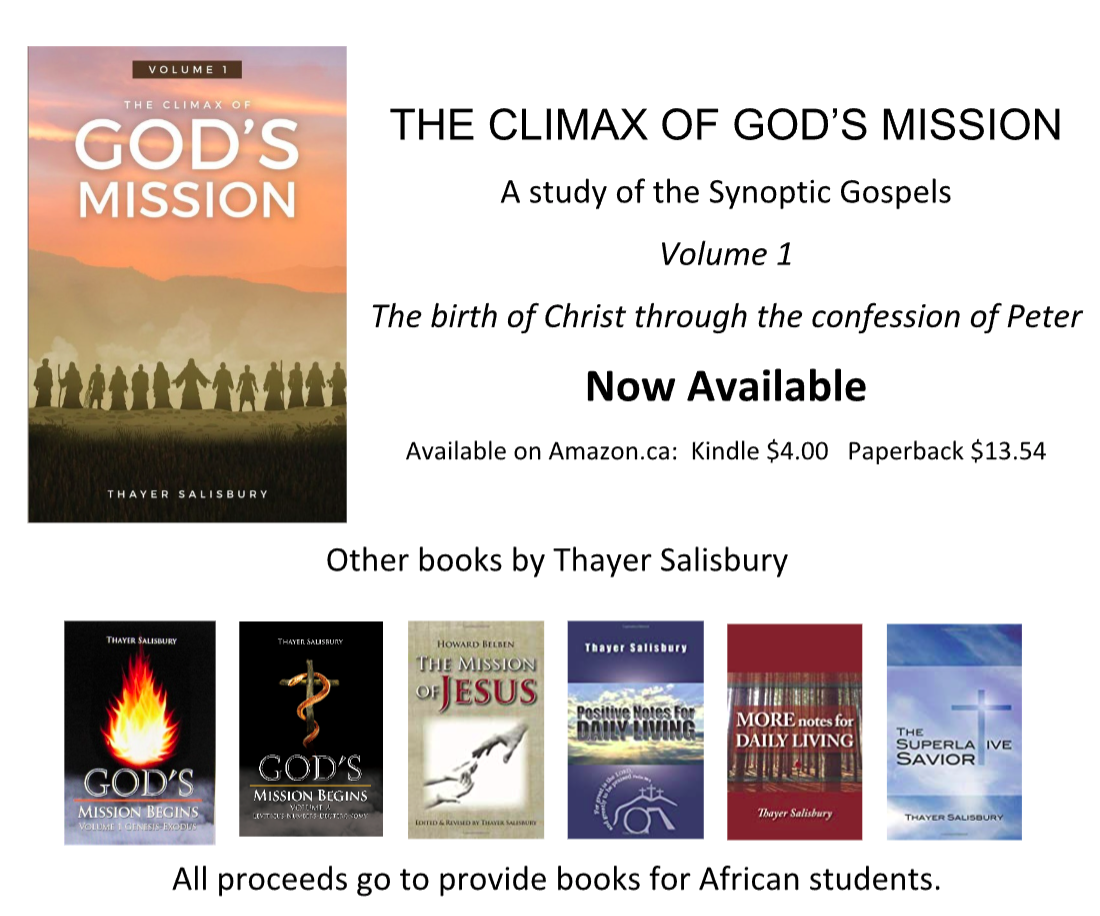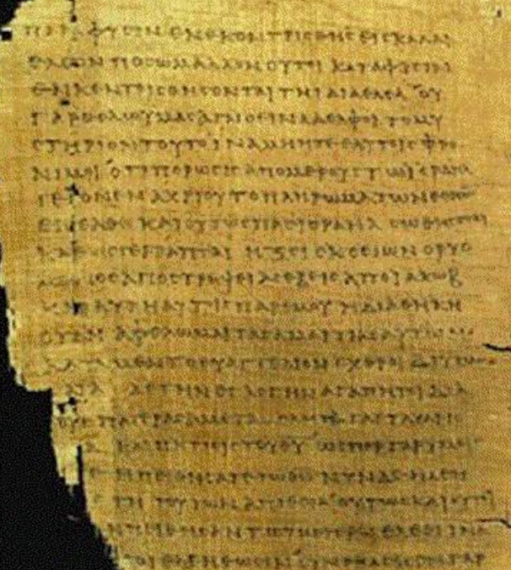Part One: History of Skepticism
For most people learning about Jesus means reading the four gospels found in the New Testament. If someone said “I want to know what Jesus was really like, what he really said and did,” we would send them to those gospels. However, one does not need to search far to find the suggestion that maybe the gospels are not the best place to learn about Jesus.
A personal experience demonstrates this point. While visiting a house to provide some information about spray foam insulation the subject of Jesus came up. The owner of the home proudly informed me of some inside knowledge he had about Jesus. Jesus, he said, was actually a part of a Jewish sect called the Essenes. Furthermore, there are other ancient gospels which the Catholic Church forced out of the Bible that tell us what Jesus was really like. As he enlightened me I waited to hear where he was finding this new information and what it meant to him. He said he had read a book recently by a Lady, whose name he could not remember. So I asked, could it have been Barbra Thiering? To which he replied, “yeah she’s the one.” I gently pointed out that no reputable scholar, even those who don’t take the New Testament seriously, accept Thiering’s conclusions. He didn’t like this very much, but I was able to continue talking with him and pointed out that his other assertion comes from a work of fiction, leading him to admit that he had also read the Da vinci Code. Eventually the gentlemen explained that he was an atheistic Buddhist but was open to other religious perspectives. I recommended that he read the New Testament for himself instead of reading what others have said about it.




The ideas shared by this polite gentleman, who lived in downtown Halifax, indicate just how important it is for Christians to know something about the current state of ‘Jesus research’. Ideas that used to be relegated to liberal seminaries and Bible scholars have, have in many cases, become mainstream. In fact, a stated goal of the Jesus Seminar is to publish their findings for the general public (Geisler 384). This means that Christians, and especially preachers, are more likely than ever to encounter people who don’t believe in the Jesus described in scripture. David Kinnaman points out that even young adults from Christian backgrounds are likely to doubt that Jesus was sinless (24).
The purpose of this article is to offer some insight into Historical Jesus research and the criteria of authenticity. What value is there, if any, of judging the authenticity of a saying of Jesus?
We will examine several things in the course of this article including:
- the attitude of historical Jesus research,
- the criteria of authenticity and the general validity of these criteria.
After looking at these things, we will suggest some conclusions about how Christians can respond to and use historical Jesus research.
To begin, we need to say something about the importance of beliefs, since each of them and all of them together, have consequences. If you doubt this, think for a moment about what would happen if you didn’t believe that it was wrong to lie or that factual correctness was unimportant. How would this affect your life and the lives of those around you? What if you didn’t believe in inertia, gravity or pain? It becomes quite obvious that what a person believes about the world has very real consequences.
This principal has much to do with historical Jesus research. Those who first suggested that what the Bible contains could not be an accurate record of Jesus life and teaching did so based on their belief that miracles cannot happen and therefore never have. (Bock, Studying the Historical Jesus 143).
Hermann Samuel Reimarus is usually credited with being the first to apply deism to scripture and to conclude that the miracles recorded could not be real and so must be explained away (Gutthold Lessing published Reimarus’s work). During this time of the enlightenment many were calling people away from faith and toward reason. Kant insisted on a separation of what can be known objectively and things relating to morals, values and faith. Martin Kahler applied this separation to Jesus and in 1892 published The So-called Historical Jesus and the Historic, Biblical Christ. From the 1700’s and onward, various scholars worked to create a description of Jesus devoid of what they thought of as the mythology and exaggeration – which they thought that they found in the New Testament gospels.
During the next century many works about Jesus were produced attempting to separate the Jesus of faith (the one described in the Christian Bible) from the Jesus of history. (Porter 36). These efforts came to an end with the work of Albert Schweitzer who wrote The quest for the Historical Jesus in which he demonstrated that the various efforts to portray the Jesus of history simply resulted in a Jesus that shared the philosophy of the writer. It should be noticed that Schweitzer presented his own portrayal of Jesus which did the same thing (Bloomberg). The work of these early sceptics is often labelled the first quest for the Historical Jesus (N. Wright 7). After Schweitzer there was a definite reduction in these kinds of efforts and that time frame is often identified as the no quest period.
Another famous scholar Rudolf Bultmann is often credited, along with Schweitzer, with bringing the first quest to an end. He famously stated that “about the only reliable things we can know about Jesus is that he existed” (Porter 45). It is therefore quite interesting that Ernst Kasemann, a student of Bultmann, is often credited with reinvigorating historical Jesus research. Starting what is often called the second quest. He argues that higher criticism, of which his teacher was a strong proponent, breathes new life into the quest.
Higher criticism asks questions about the origination and purpose of a given text. In his essay, Demythologizing the New Testament Bultmann writes:
“Criticism of the New Testament is simply a given with modern thinking as it has come to us through history.”
He then lists all the things from scripture that the modern mind can’t accept and goes on to say, “We cannot use electric lights and radios… avail ourselves of modern medical and clinical means and at the same time believe in the spirit and the wonders of the New Testament.” Criticism, he says, is the answer (Bultman 4).
- Please note, that we are not talking about lower criticism which focuses on rebuilding an accurate copy of what was originally written down from the manuscript evidence available.
Two forms of higher criticism have great influence on historical Jesus research (especially the second quest).
Form criticism, which breaks the text down into smaller portions (pericope’s) and then examines their origin and context.
Redaction criticism, which supposes that scripture was compiled and edited (even modified) by redactors as time went by. It seeks to determine why passages were placed where they were and why. Historical Jesus researchers, however, often apply these disciplines with great skepticism and do so only from a human perspective.
The focus of these articles will primarily be on the second quest and the kind of criticism associated with it.
A problem quickly arises when one approaches the scriptures from a strictly naturalistic standpoint. Scripture is filled with events that defy the laws of nature and indicate the direct involvement of God. Remember from above, that the scholars involved in this work were first deists. They believed that God created the world but has had nothing further to do with it (Geisler 189). This means that the accounts of miraculous events must have been added from the imagination of the gospel writers and for some reason.
Part Two: Criteria of Authenticity
This brings us to a discussion of how critical scholars understand the development of the bible.
Most would suggest that Paul’s letters are the earliest Christian material, usually pointing out that Paul contains no reference to when Jesus lived, the virgin birth, miracles stories or to bodily resurrection. The only source that would be considered possibly earlier than Paul would be what are called saying gospels. These are theorized to be collections of some of the common sentiments that Jesus communicated in His preaching. The most commonly referenced document is the “Q” gospel where “Q” stands for the German word “quelle” meaning source (Evans 55) (Geisler 618). This document is said to be a collection of sayings which was built upon by Matthew, Mark and Luke (Crossan, The Birth of Christianity 105). The gospel of Thomas is another document often claimed to be earlier than the canonical gospels and sometimes used as a source. More recently, J. D. Crossan has suggested that what he calls the cross gospel was another source that was used by Mark, then Matthew and Luke and finally John, which contained the passion narrative (Crossan 404).
Under this theory there is said to be a core collection of accurate information about Jesus contained in the New Testament gospels. Much of what is there, however, is said to have been added by various authors for pragmatic reasons (Crossan, The Historical Jesus, 258). An example could be Matthew 18:15-20. This pericope would be understood to have been invented to deal with disputes between Christians in the early centuries. Another example can be found in Mark 7:14-22, where Jesus talks about what defiles a man. It is argued that since the concept of all foods being clean didn’t become common in the Church until after Acts chapter ten, this passage must have been added after that time. In appendix 1 of Crossan’s, The Historical Jesus, he includes a list of sayings which he has marked with a + or – indicating whether or not a saying is original to Jesus or a later addition (Crossan, The Historical Jesus, 427). This kind of thinking is common among second quest scholars.
It should be noted that more recently a number of scholars have emphasised the Jewishness of Jesus. This emphasis among some scholars has been labelled a third quest (N. Wright 105). In general, those who accept Jesus Jewish background and try to place Him in that context are less critical of the New Testament than those of the second quest. It’s important to point out that not everyone divides historical Jesus research this way, many would still consider this part of the second quest.
Before leaving the discussion of those who have undertaken to describe what Jesus was really like, an important note should be made. There have always been and continue to be scholars who argue and believe that the gospels are a reliable and accurate source of information about Jesus.
Coming to the scriptures with the assumption that they are not an accurate or reliable source of information about Jesus means that you need some method of separating fact from fiction. This has led those engaged in the search of the “historical Jesus” to develop certain criteria which they use to test the reliability of a particular passage or event. It should be pointed out, that it is a valid exercise to apply criteria and reason to what we believe. We do this all the time when faced with a claim that is unlikely or is for some other reason hard to believe. When this happens we use certain criteria to test the trustworthiness of that claim. We might ask: who saw it happen? Are there some observable results of this claim? Is there a record somewhere of what happened? Therefore it is not out of place to apply this kind of thinking to scripture. The historical reliability of the Bible is one of the key things that separate it from other so called holy books. But having said that, there is both a right way and a wrong way to examine evidence. The right way is proceed with an open mind that is willing to go where the evidence leads. The wrong way is to start with a preconceived notion about what happened or an unwillingness to accept the results of the examination.
The criteria used to establish the historicity of an action or saying of Jesus are called “criteria of authenticity”. Craig Evans identifies six of these while also pointing out that he is aware of over twenty five that have been used or proposed by various scholars (Evans 48). Joel Willitts created a chart of criteria based on John Meier’s work which has five criteria (80). Stanley Porter lists five criteria, which he says, “have figured most prominently through the twentieth century till today” (100). In considering the various lists and comparing them, a few commonalities become apparent. The general consensus on the most important criteria of authenticity is as follows:
- Historical Coherence: This criterion asks one to consider the known facts and use them to establish a base line. Generally it is accepted that Jesus attracted a following, drew negative attention from authorities, was executed and was proclaimed as Messiah and Son of God (Habermas 224-225). If some suggestion is made about a saying or act of Jesus that doesn’t fit with these then its authenticity is questioned.
- Embarrassment: This criterion deals with material in the gospels which would be embarrassing or inconvenient to the early church. These would not have been invented and so must be historical.
- Multiple attestation: The question asked here is, how many sources are there for a certain saying or event. In other words, how many times and or how many places does the same story or event appear? The more it is found the more likely it is to be historical. There is considerable discussion about what constitutes a source.
- Semitic Language Phenomenon: This criterion expresses the expectation that the sayings and activities of Jesus should reflect the language that He spoke and the culture in which he lived.
- General Coherence: This criterion considers the overview of Jesus material and asks, does a saying or passage fit with other material whose historicity has already been established?
- Double dissimilarity: This criterion says material that is not consistent with early Christianity or ancient Judaism must have been original to Jesus. This is because neither of the aforementioned groups is likely to have invented a saying of Jesus that they would disagree with.
It is important to note that these criteria may yield very different results depending on the framework in which they are applied. Therefore, we need to ask – what is the appropriate framework? Should one come to scripture saying that only those portions which pass all the criteria are actually from Jesus? Or should these criteria serve only in a positive sense to further confirm the historicity of Jesus’ life and teaching?
There are two important things that will help to answer this question. The first pertains to the question of miracles. If we decide that miracles can’t happen then we are forced to approach scripture with great skepticism. If we allow that God, can intervene in the universe then there is no reason to reject the accounts given in scripture that he has done so.
Norman Geisler has demonstrated that to reject miracles out of hand is unreasonable. If one accepts the existence of a God, who is powerful enough to create the world, why is He not allowed to intervene in His creation?
The objections that have been raised against miracles are not sufficient to rule them out. For example, those who argue from personal experience would conclude that since they have never seen a miracle, that therefore miracles do not happen. Many of the things that we accept as established fact fall outside of our personal experience. Otherwise, a person from a warm climate who has never seen snow could never reasonably believe a person who claimed to have seen snow. Experience – even our collective experience can only prove that miracles are rare, a fact with which the scriptures agree. It is not unreasonable to believe in things that are rare. Each person on earth is unique and will only live once. The earth is one of a kind. All lifeforms on it, are exceedingly rare in the context of a lifeless universe all around us, yet no one doubts that life exist. It is therefore not valid to begin with the false assumption that God does not exist and that miracles do not happen, to validate a skeptical approach to the Biblical record since it disagrees with those assumptions. (Craig 254). A fair reading of the bible would give equal credence to both the miraculous and non-miraculous narratives, especially in light of the historical corroboration that is now available.
The second point that needs consideration is the overall historical accuracy of the New Testament documents. There are a number of good reasons to accept the New Testament documents as historical.
- When compared to what is known from secular history the New Testament is found to be extremely accurate.
- The authors of the New Testament were close to the events they recorded. Many were direct witnesses themselves or accessed sources who were themselves eyewitnesses
- The New Testament documents were written very shortly after the events they record. Not enough time had elapsed for the development of mythology. Nor had enough time elapsed for the first hand witnesses to die off who could verify or refute that which was written. Consider for I Corinthians 15:1-11.
- The events as recorded in the New Testament have great explanatory power. Unless the events recorded in the gospels are true what possible reason would Jesus’ followers have had to continued their allegiance to Him and His teachings? Why would they die for him knowing that theirs was a lost cause?
- The events as recorded in the gospels also explain the conversion of people who had been opposed to Jesus and Christianity.
- One further reason to accept a bias in favour of the historicity of the New Testament would be the apparent divine involvement in the preservation and revelation of the New Testament.
Even the person who does not accept all of these reasons, should find that one or two of them is enough to conclude that an extremely skeptical approach to the New Testament is unnecessary and unwarranted. Instead, these criteria of authenticity should be used to deepen our understanding and fortify our faith in what is already an otherwise reliable source of information.

